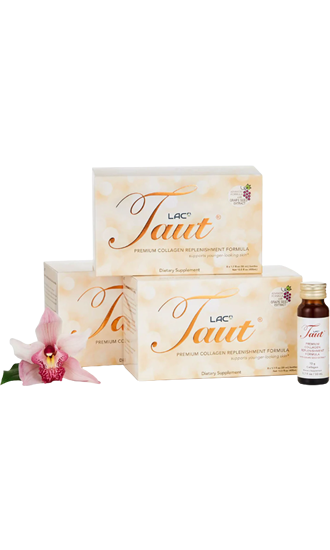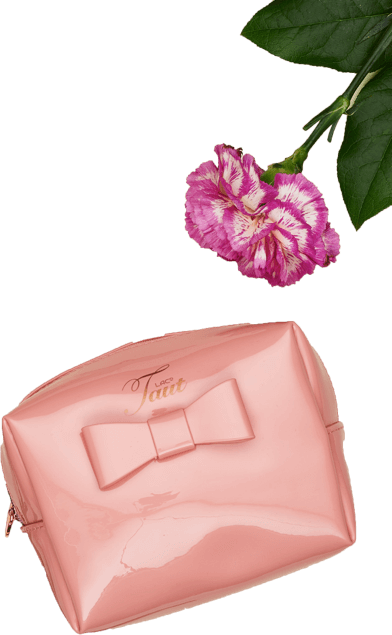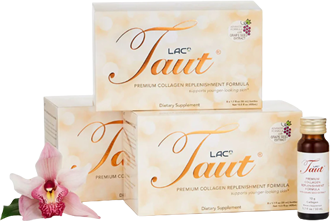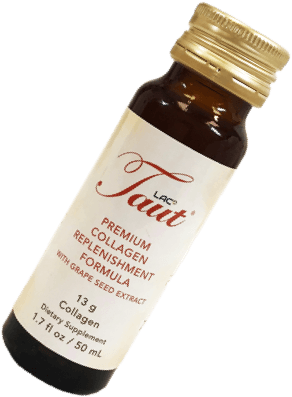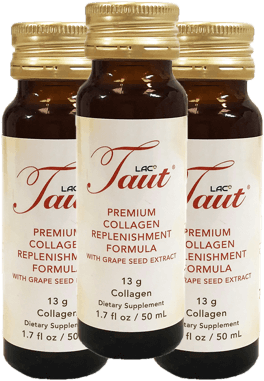Low Estrogen Symptoms: Top 13 Signs of Deficiency & Low Levels in Women

Low estrogen levels can lead to a variety of uncomfortable symptoms that knock your confidence and impact your health. Some of these symptoms can be cosmetically frustrating, with others being downright debilitating.
Estrogen affects so many things in our bodies, and it's especially important for women. It influences our beauty by impacting our skin health and hair growth, while also playing a major role in our sexual development and reproductive systems. Without it, many parts of the body can suffer.
But how do you recognize the symptoms of estrogen deficiency, and when are these symptoms linked to bigger health concerns? We'll outline the top 13 symptoms of low estrogen, what causes them, and how they can be treated to get your health and beauty back on track.
What Is Estrogen?
Estrogen is a sex hormone that has many functions in the body. Although typically described in singular terms, estrogen is actually an umbrella term for a group of sex hormones:
-
Estradiol: the most commonly produced type of estrogen produced in women during reproductive years
-
Estriol: a weaker form of estrogen that's most common in women after menopause
-
Estrone: the type of estrogen most prevalent in pregnancy
Estrogen works in tandem with other hormones in the endocrine system to coordinate your energy levels, metabolism, growth, reproductive health, stress responses, and more.
For women, estrogen is responsible for developing and maintaining the reproductive system. In fact, it's the primary hormone that differentiates female bodies from male bodies. Fat cells, adrenal glands, the pituitary gland, and ovaries produce estrogen in female bodies.
The main functions of estrogen include:
-
Puberty: estrogen is responsible for the sexual development of girls
-
Reproductive cycle: estrogen stimulates the growth of egg follicles in the ovaries and controls the uterine lining throughout menstruation and during pregnancy
-
Breast changes: estrogen affects breast changes during puberty, menstruation, and pregnancy
-
Vaginal health: estrogen is responsible for vaginal lubrication and thickens the vaginal wall
-
Metabolism: estrogen regulates glucose metabolism, cholesterol metabolism, and insulin sensitivity
As you can see, it's an essential hormone in the body, most especially for women's health. So when our estrogen levels decrease, a number of unwanted symptoms start to become apparent.
Top 13 Symptoms of Low Estrogen Levels
Let's take a closer look at the signs of low estrogen:
1. Irregular Menstrual Cycle
One of the most common symptoms of an estrogen deficiency is a disruption to the menstrual cycle, causing infrequent or missed periods.
Irregular periods (oligomenorrhea) or missed periods (amenorrhea), are a direct result of a hormonal imbalance. Estrogen, alongside progesterone and follicle-stimulating hormone (FSH), is a primary hormone in regulating the menstrual cycle. 1
When estrogen production slows down, your hormone levels become imbalanced and this can lead to fewer periods or an end to periods altogether.
2. Dry Skin
Another one of the common symptoms of low estrogen levels is severe dry skin, which may become prone to itching, flaking, and peeling.
Estrogen impacts the production of collagen, elastin, and hyaluronic acid in our bodies – three essential components that are responsible for the strength, elasticity, and hydration of our skin. These three components form the structure of the dermis, which is the foundational layer of the skin. Hyaluronic acid, in particular, is a nutrient responsible for the moisture content of the skin.
So when our estrogen levels are low, and hyaluronic acid production slows down, we become more prone to dry, dehydrated skin. 2
3. Accelerated Skin Aging
When low estrogen levels impact our production of collagen and elastin proteins, this has a big impact on the overall health and vitality of our skin.
Collagen fibers are responsible for the strength and resilience of our skin, while elastin is what gives our skin its stretch. These proteins naturally decline as we age, and this will inevitably cause wrinkles and sagging skin for everyone in later life.
However, a major component in how quickly these proteins decline is our estrogen levels. When estrogen declines, collagen and elastin deteriorate at a much quicker rate, and skin quality can plummet, resulting in thin skin, inflammation, wrinkles, and slower wound healing. 3, 4
4. Thinning Hair
As if the skin symptoms weren't bad enough, hair thinning is another frustrating symptom that can sometimes accompany low estrogen levels.
Hormones play a huge role in the the cycle of hair growth in our bodies, responsible for sex-specific hair growth in different parts of the body. A hormonal imbalance can lead to excess hair growth in unwanted places, as well as hair loss on the head. 5
When estrogen levels decline, your body can produce excess androgens – a group of male hormones that may shrink hair follicles and lead to female pattern hair loss (FPHL). 6
5. Mood Swings
Fluctuating estrogen levels throughout women's cycles can lead to mood disturbances, sadness, anxiety, anger, and frustration.
This is because estrogen regulates our levels of serotonin and the release of endorphins in the brain, which are the so-called "happy hormones" responsible for making us feel good. When estrogen levels are low, we might experience a dip in these feel-good hormones and this can impact our mental health.
Theories suggest that low estrogen can be a contributing factor in depression for women. It is also possible that the abrupt decline in estrogen after giving birth can be linked to postpartum depression. 7
6. Hot Flashes
This symptom is perhaps the most disruptive to your day, the dreaded hot flashes. We associate hot flashes with menopause, but they can accompany any low estrogen-related disorders.
Estrogen controls a part of your brain that regulates body temperature, so without it, you can be more prone to waves of feeling hot and sweaty. Low estrogen can lead to sudden increases in body temperature that seem to come from nowhere. You might experience hot flashes during the day, as well as uncomfortable night sweats.
7. Fatigue
Low estrogen levels can also impact how well you sleep, and not in a good way. Insomnia or trouble sleeping are common side effects of decreased estrogen production, which can leave you feeling tired and drained throughout the day.
This happens because low estrogen can reduce serotinin production (the happy hormone) in your brain, and serotonin is responsible for creating melatonin (the sleep hormone). When we lack melatonin, the circadian rhythm is disrupted and your sleep patterns can become fragmented. 8
On top of this, if you are experiencing hot flashes and night sweats, your sleep may be disturbed even further and lead to feelings of exhaustion.
8. Headaches
Studies have linked low estrogen levels in women to an increase in headaches and migraines. When estrogen levels decrease to their lowest levels in the menstrual cycle (right before menstruation), women are more prone to migraines. 9
Although the exact link between estrogen and migraines is yet to be fully understood, it may be due to the fact that estrogen controls chemicals in the brain that affect how we feel pain. When estrogen levels are low, painful headaches and hormonal migraines seem to increase.
9. Breast Tenderness
Breast pain and tenderness are some of the most typical low estrogen symptoms in women. Most women will be familiar with the breast tenderness that comes right before each period, when estrogen levels are lowest. It's also one of the most common menopausal symptoms, again due to the sharp decline of estrogen levels during menopause.
10. Urinary Tract Infections (UTIs)
Estrogen plays an important role in the health of the urinary tract, so when estrogen levels decrease, this area becomes more prone to urinary tract infections and other bladder-related issues such as incontinence. 10
11. Painful Intercourse
Estrogen is responsible for vaginal lubrication, so low estrogen can cause vaginal dryness which may in turn lead to painful sex. Lack of estrogen can also reduce libido for many women, an impact which may be attributed to this painful sex side effect.
12. Bone Loss
Estrogen plays an important role in our bone health, promoting the activity of cells that produce bone. It works in tandem with calcium and vitamin D to give us healthy joints and bones as we grow, and throughout later life.
When estrogen levels decrease, whether it's due to age, menopause, or a health condition, we experience a reduction in bone density that leaves us more prone to fractures.
13. Weight Gain
Lastly, weight gain can be a side effect of low estrogen levels. Estrogen, along with progesterone, is responsible for the storage of body fat. It helps regulate how we digest glucose and lipids, maintaining a healthy metabolism when it comes to properly digesting the foods we eat.
When your body produces less estrogen than normal, it may store more fat and lead to weight gain.
What Causes Low Estrogen?
It's clear from the symptoms above that low estrogen can have a really big impact on women's health. There are many factors that can impact estrogen production in the body, the most common being aging and eventual menopause.
Estrogen in women is produced by the ovaries, and as women age, the ovaries slow down and thus our estrogen production gradually slows down. This is a natural and steady decline, until menopause occurs. During menopause, estrogen production falls to a very low level. In the U.S., the average age at which women reach menopause is 51. 11
Most of the common menopausal symptoms (absence of periods, hot flashes, night sweats, vaginal dryness, dry skin, and wrinkles) are caused by low estrogen levels.
Other reasons that estrogen levels may decline include:
-
Eating disorders and extreme dieting
-
Excessive exercise
-
Autoimmune diseases
-
Hypopituitarism (an under active pituitary gland)
-
Kidney disease
-
Toxins leading to ovarian failure
-
Genetic conditions such as Turner Syndrome or Fragile X syndrome
Of course, low estrogen levels can come from a wide variety of conditions – so it's best to take a blood test with your doctor if you are experiencing some of the symptoms of low estrogen on this list. Your doctor will be able to provide a proper diagnosis by performing blood tests that check your hormone levels.
Treating Low Estrogen Production
There are a number of treatment options for hormone imbalances that may reduce the uncomfortable symptoms of low estrogen. Let's take a look at the main treatments for low estrogen:
Estrogen Therapy
The most common treatment for low estrogen in women is estrogen therapy, otherwise referred to as estrogen replacement therapy (ERT). This treatment involves administering supplementary doses of estrogen through pills, patches, vaginal creams, or injections. It is best suited to pre-menopausal women, and it can be effective in reducing the risk of bone loss and cardiovascular disease.
Estrogen therapy is best suited for short-term treatment, with the FDA advising low doses which should only be used for up to 2 years maximum. This is because estrogen therapy can cause an increased risk of developing breast cancer, uterine cancer, and blood clots. 12
Hormone Replacement Therapy (HRT)
Hormone replacement therapy (HRT) is another form of treatment used to combat hormonal imbalances. Similar to estrogen therapy, it involves hormonal supplementation through pills, patches, creams, or injections. The difference between the two treatments is that hormone replacement therapy can be adjusted and may combine other hormones to suit your needs.
The most common combination is estrogen and progesterone, which may be prescribed as hormone therapy for women approaching menopause, as both estrogen and progesterone drop in the perimenopasual period.
Combined estrogen and progesterone treatments should only be prescribed in consultation with your doctor, as they can increase the risk of breast cancer, heart disease, stroke, and blood clots. 13
Dietary Recommendations
Aside from using hormone therapy to balance your hormones levels and thus treat the cause of your symptoms, you can also help manage the symptoms of low estrogen with your diet and lifestyle choices.
A healthy balanced diet combined with a moderate exercise routine will go a long way to help keep stress at bay, maintain a healthy body weight, and keep your skin youthful, moderating the impact that low estrogen may have on your body.
Phytoestrogens
There are also some nutrients you can include in your diet to combat the impacts of estrogen deficiency, the most important being a group of compounds known as phytoestrogens.
Phytoestrogens are compounds found in certain plants that are thought to mimic the impacts of estrogen in the body. Isoflavones are the most common and prevalent type of phytoestrogens, and these powerful compounds are found in abundance in legumes, especially soybeans. This means that tofu and other soy-based foods are great additions to your diet if you are low on estrogen.
Phytoestrogens can also be found in nuts, seeds, fruits, and vegetables, especially in garlic, carrots, celery, potatoes, rice, wheat, red clover, and sweet potatoes. 14
Piling up your plate with a healthy mix of these phytoestrogen-rich foods can help stabilize hormonal imbalances and reduce the uncomfortable symptoms of too little estrogen.
Antioxidants
Antioxidants are another type of powerful compound that can help reduce the impact of some of the symptoms of low estrogen. Antioxidants fight against oxidative stress and free radical damage in the body, which in turn helps reduce inflammation, boost your metabolism, calm stress, and revitalise your skin.
You can get your daily fix of antioxidants through your diet by packing your meals with plenty of colorful fruits and vegetables, dark leafy greens, green tea, and even dark chocolate.
If you're struggling with the impacts of low estrogen on your skin and your body, an antioxidant supplement like Masquelier French Pine Bark Extract can help. Significantly more powerful than vitamin E and 20 times more powerful than vitamin C as an antioxidant, this supplement can help stave off inflammation and infection, while also protecting your skin from the harmful effects of low estrogen levels.
Skincare Recommendations
If you want to combat the cosmetic concerns that come with low estrogen levels, there are some skincare tips and tricks we can teach you:
Boost Collagen Production
Because low estrogen has such a harmful impact on collagen and elastin production, especially during menopause, many women find themselves exasperated with the sudden drop in skin quality that comes in mid-life.
Although there is no way to stop the hands of time, there are a variety of anti-aging skincare treatments and ingredients that can help combat collagen loss and preserve a youthful complexion for a little longer. The best ingredients that enhance and support collagen production in your skin include collagen peptides, retinol, growth factors, and vitamin C.
For the best results, it's wise to nourish your skin from the inside out, as topical treatments can only go so far. If you want to keep your skin healthy without the hefty price tag that comes with dermatological facials, a liquid collagen supplement is the perfect place to start.
Taut Liquid Collagen is a premium marine collagen supplement designed to help slow down and reduce signs of aging, and visibly reduce fine lines, wrinkles, and sagging skin. Our unique formula contains a potent dose of marine collagen peptides along with hyaluronic acid, elastin peptides, grape seed extract, ceramide, vitamin C, and vitamin B, giving your body the nutrients it needs to strengthen the dermis, restore skin elasticity, and improve your complexion from within.
Hydrate Your Skin
Dry, irritated skin is a common and frustrating symptom of low estrogen, and often the usual moisturising creams just won't cut it. When your estrogen levels are low, it's extra important to keep your skin as hydrated as possible, using ingredients like hyaluronic acid, ceramide, and aloe vera to lock moisture into the dermis.
Taut Hydrate hyaluronic acid capsules can give your skin a potent dose of natural hyaluronic acid and grape seed extract from the inside out, reaching deeper than any cream, serum, or filler can penetrate. Combining hyaluronic acid with grape seed extract (a potent antioxidant), Taut Hydrate can combat against moisture loss, reduce sagging, brighten skin tone, and keep your skin full, plump, moist and radiant.
Combat Low Estrogen Symptoms With Taut
If you're struggling with low estrogen, the best treatment plan for you will likely combine medically prescribed treatments like hormone replacement therapy with diet and lifestyle alterations.
Our Ultimate Transformation Program is a great addition to your skincare routine if you want to fight dry, itching skin and premature aging. It combines a three-week supply of our most healing skincare products: our signature Taut Liquid Collagen Drink, Taut Hydrate hyaluronic acid supplements, and Taut Collagen Masks.
Together, these skincare heroes can help fight the signs of low estrogen on your skin, combining intense hydration with serious anti-aging impact. For glowing, youthful skin that will help get your confidence back on track.
Don't miss out on up to 15% off your skincare bundles, which you can avail of through our autoship service here.
References:
-
Effect of estrogens on skin aging and the potential role of SERMs
-
Neurobiological Underpinnings of the Estrogen – Mood Relationship
-
Neurobiology, Pathophysiology, and Treatment of Melatonin Deficiency and Dysfunction



